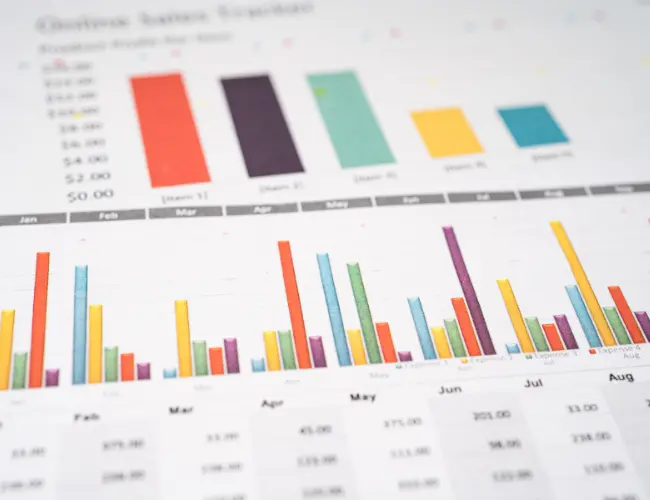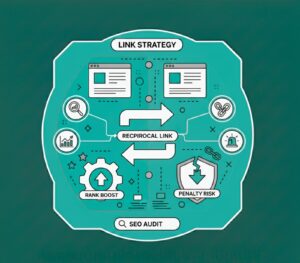PPC A/B Testing: How to Find What Works
Blogs | PPC
Written By: Nyah Mallen
Blogs | PPC
Written By: Nyah Mallen
Introduction
It’s no secret that Pay Per Click (PPC) advertising is a powerful way to attract customers and grow your business — but the costs can quickly add up. The success of your paid ads hinges on more than simply launching a campaign. To achieve the best results, your ads need to be constantly tested and refined. That’s where A/B testing comes in.
A/B testing, also known as split testing, is a simple but powerful method for identifying what’s working in your campaigns, and what isn’t, by comparing different versions of your ads. This smart, data-driven approach allows businesses to boost performance without increasing their ad spend.
In this article, we’ll break down the essentials of PPC A/B testing, including why it’s important, what to test, and how to get started.

What is PPC A/B Testing?
PPC A/B testing involves running two versions of a single paid ad simultaneously to determine which one performs better. Ideally, when performing split testing, only one element of the campaign should be changed at a time, such as the headline, landing page, or ad copy.
By comparing the performance of these variations, you can identify the most effective changes to optimise your ads, ultimately lowering your Cost Per Conversion (CPC). This testing also helps you better connect with your target audience by revealing which language, messaging, and imagery resonates most with them, leading to improved campaign performance overall.
Why is Split Testing Essential for Your PPC Success?
For small and medium-sized businesses, every pound of ad spend needs to pull its weight. PPC A/B testing help you:
- Reduce wasted spend by focusing on what works
- Improve click-through and conversion rates over time
- Get insights fast without reworking your entire strategy
- Compete with larger brands by working smarter, not just spending more
It’s important to remember that running paid ads isn’t just about throwing everything at a wall and seeing what sticks — it’s about making small, intentional changes that can add up to real results.

What Can You A/B Test in a PPC Campaign?
You don’t need to test everything all at once. In fact, it’s more effective if you don’t. Focus on testing one variable at a time. Here are the key areas that tend to have the most impact:
1. Ad Copy
Start with the key elements of your ad copy. Testing headlines, descriptions, and calls to action (e.g., “Buy Now” vs. “Get Yours Today”) can help you understand what resonates best with your audience.
2. Landing Pages
The layout and structure of your landing pages can make a big difference in performance. Test different content structures, as well as variations in conversion forms like short vs. long, or changes in button colours or placement, to see what converts best.
3. Audience Targeting
Refining your audience targeting can result in significant improvements to campaign performance. Test variations in location, age ranges, income brackets, or even interest-based targeting to find the most effective segments.
4. Ad Formats
Different ad formats can deliver different results. Test standard text ads against responsive ads, or experiment with display ads featuring various images or graphics to see what captures more attention.
5. Bidding and Budget
Experimenting with your bidding strategy can impact campaign performance. Try smart bidding vs. manual bidding and test how shifting your budget affects results across campaigns.
How to Set Up a Simple A/B Test
There are various ways to perform an A/B test, but for simplicity, we’ll focus on manual A/B testing:
- Choose a single element to test, such as two different headlines.
- Create two versions of your ad — Ad A and Ad B.
- Run both versions under identical conditions, including the same budget, audience, and schedule.
- Let the test run for at least 1-2 weeks, depending on your traffic, or until you’ve gathered enough reliable data.
- Measure the results by comparing which ad achieved more clicks, conversions, or higher engagement.
If you’re testing landing pages, tools like Unbounce can streamline the process and help you manage your experiments with ease.

What Makes a Test 'Successful'?
Success depends on your goal. It’s essential to identify what you’re trying to achieve before measuring the results of your A/B test. Are you trying to drive more traffic, increase conversions, or reduce costs? Here’s how to measure success based on your specific goal:
- Get more clicks? Focus on your Click-Through Rate (CTR). By monitoring CTR, you can determine which ad version is more compelling in getting users to click through and explore your offer.
- Drive more sales or sign-ups? Look at conversion rate. A higher conversion rate means your ads are successfully driving your audience to complete those valuable actions.
- Lower your cost per conversion? Track how much each lead or sale costs. By testing and refining your ads, you can identify ways to lower this cost and achieve a better return on your ad spend.
Don’t be tempted to call a winner too early. You’ll need a decent amount of data (think 1,000 conversions per month) in order to trust the outcome.
Common A/B Testing Mistakes to Avoid
- Testing too many things at once: You won’t know which change made the difference.
- Stopping too soon: Early results can flip. Let the test run its course.
- Ignoring statistical significance: Make sure your results are more than just random noise.
- Not acting on what you learn: Testing is great, but only if you apply the insights.
By avoiding these mistakes, you’ll gain an edge over many competitors who are still making them.

Turning Results into Smarter Strategy
Once you’ve found a winner, roll it out across your campaigns, or run a new test based on your findings. Testing should be a regular part of your PPC routine, not a one-off.
Keep a simple spreadsheet or document that tracks:
- What you tested
- When you ran it
- What the results were
- What action you took next
Over time, this becomes your personal playbook for better-performing paid ads.
Conclusion
A/B testing is one of the most valuable tools in your PPC toolkit. With just a bit of planning and consistency, it allows you to improve performance, reduce wasted ad spend, and make smarter advertising decisions based on real data, not guesswork.
By focusing on one change at a time, tracking results carefully, and avoiding common pitfalls, you can build more effective campaigns that continually improve over time. Whether you’re running ads yourself or working with a marketing partner, making A/B testing part of your regular routine will help you get more out of every pound you spend.
Start small, stay consistent, and let the data guide your next move.


Written by - Nyah Mallen
Meet Nyah – A Digital Marketer Who Lives and Breathes SEO!
With a Bachelor’s in Digital Marketing, Nyah brings a ton of expertise across different sectors, helping businesses grow online. She’s all about SEO, making sure content gets seen by the right people.
Outside of work, she’s a proud cat person and a big fan of Dungeons & Dragons—whether she’s strategising campaigns or epic quests, she’s always got a plan!
Want some more?
Latest Insights & News

Reciprocal Links in SEO: Do They Still Boost Rankings or Risk Penalties?
For the keyword “reciprocal links SEO,” focus on explaining how reciprocal linking works today. Reciprocal links are not harmful by default, but Google can flag excessive or manipulative link exchanges. To stay safe, only exchange links when they are contextually relevant, natural, and valuable to users.

SEO as the Foundation of Digital Growth: Why It’s More Than Just a Marketing Tactic
When focusing on “SEO for business growth,” highlight how SEO directly contributes to long-term scalability. Modern SEO goes beyond ranking—it boosts brand visibility, qualified traffic, customer trust, and conversion opportunities. To optimize effectively, ensure your content covers user intent, builds topical authority, and leverages technical SEO elements like fast loading, mobile-friendly design, and structured data.

AEO Mastery: Step-by-Step Guide to Building AI Citations & Boosting Visibility
When targeting the keyword “AEO Guide to Building AI Citations & Boosting Visibility,” focus on Authoritative Engine Optimization (AEO) principles. AI-driven search requires clear, structured, and entity-rich content.
